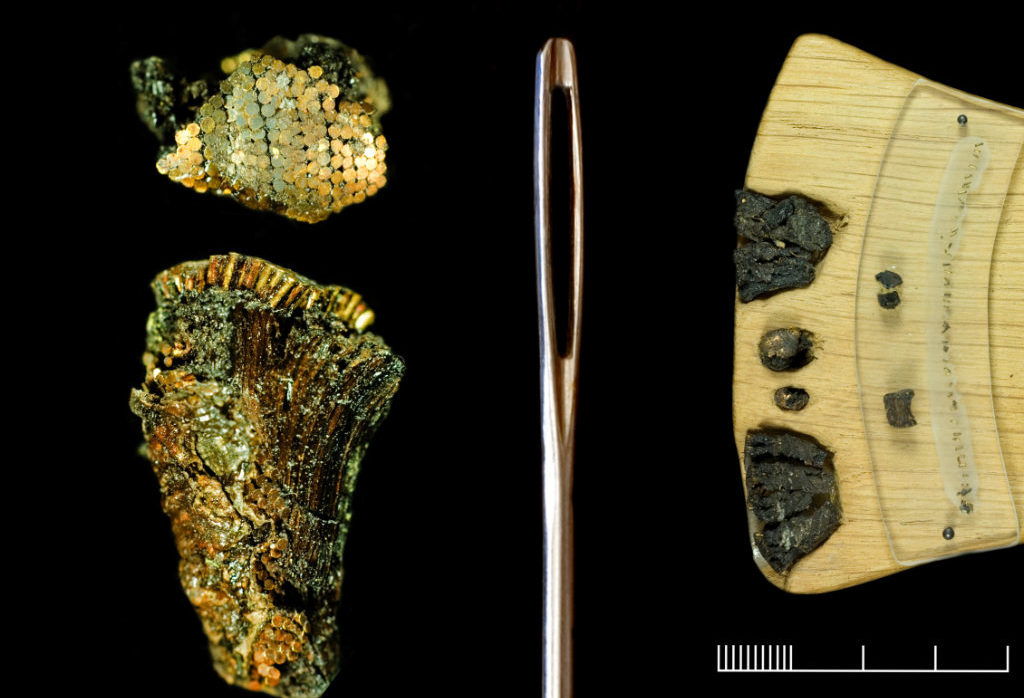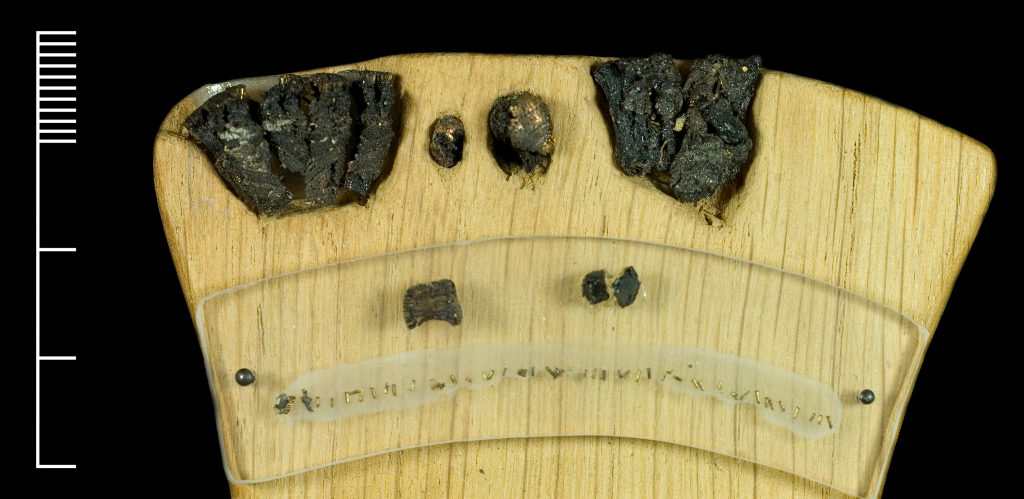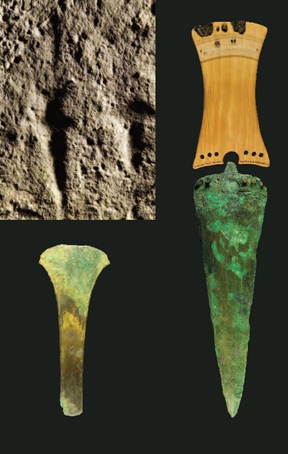This dagger was buried with the Bush Barrow Chieftain who died in about 1950BC. The blade is made of bronze but the pommel is one of the most remarkable Bronze Age finds in Britain, decorated with microscopic gold studs set in a zig-zag pattern. The Bush Barrow Chieftain was buried close to Stonehenge at a time when the monument was being changed and adapted after the sarsen trilithons had been erected. Carvings on the sarsens show a dagger similar to the one found at Bush Barrow.
The pommel is made of wood, covered with pine gum acting as an adhesive. A thin bronze point was used to make a hole in the wooden handle and then a single gold stud was inserted. Each gold stud is as thin as a human hair and most are less than 1 millimetre in length. We can count how many studs there are in a single square centimetre. Multiplying that up for the surface area of the dagger pommel means that there were approximately 140,000 gold studs.
Each gold stud was made individually - drawing out square-sectioned gold wire and then cutting into short lengths. Each length was folded in half and then rolled between two pieces of wood or stone to form the body of the stud. One end was gently rounded and the other flattened to create the head of the stud. Each was then set in place, with the heads of the studs overlapping like fish scales.
In an article about this remarkable find in the Independent newspaper Mr. Rabbetts - author of an important textbook on the optics of the human eye, Clinical Visual Optics said that he thought "that it is possible that Bronze Age micro-gold-working artisans may have started their careers by the age of ten. Within around five years (ie potentially by the age of around 15), many of these child artisans’ eyes would have been so affected by close-up focusing that they would have become myopic."
Gold-studded daggers have been found in Brittany and in Britain and archaeologists have long puzzled over where the Bush Barrow dagger hilt was made. The dagger blade is of a type often found in Brittany and there have been 22 daggers with pommels decorated with gold studs found in Brittany. However, there are 6 finds of gold-studded daggers in Britain and the Bush Barrow dagger is exceptional in the craft skills used to create the microscopic gold studs. Read about the research into the gold's origins here.
Bush Barrow was excavated in 1808 by William Cunnington and is one of 50 burial mounds on Normanton Down, looking out over Stonehenge. The excavation was undertaken by his two trusted workers, Stephen and John Parker, who were father and son, and their finds were illustrated by Philip Crocker. William Cunnington takes up the story in his notes:
The handle of wood belonging to the dagger had been richly and most singularly ornamented by an immense quantity of minute gold rivets no thicker than the smallest pin –the end of the handle had been filled with these small points of gold, but in the flat part of the handle these rivets had been most elegantly arranged in a Vandyke pattern so as to procure a novel and most pleasing effect. Mr. Crocker has drawn part of the end of the handle which may give you a better idea of the whole. There are now a number of these minute gold rivets in the remainder of the wood which still adheres to the brass. When we first discovered these shining points of gold we had no concept of their nature, otherwise we might perhaps have preserved thousands of them, but unfortunately John with his trowel had scattered them in every direction before I had examined them with a glass.






